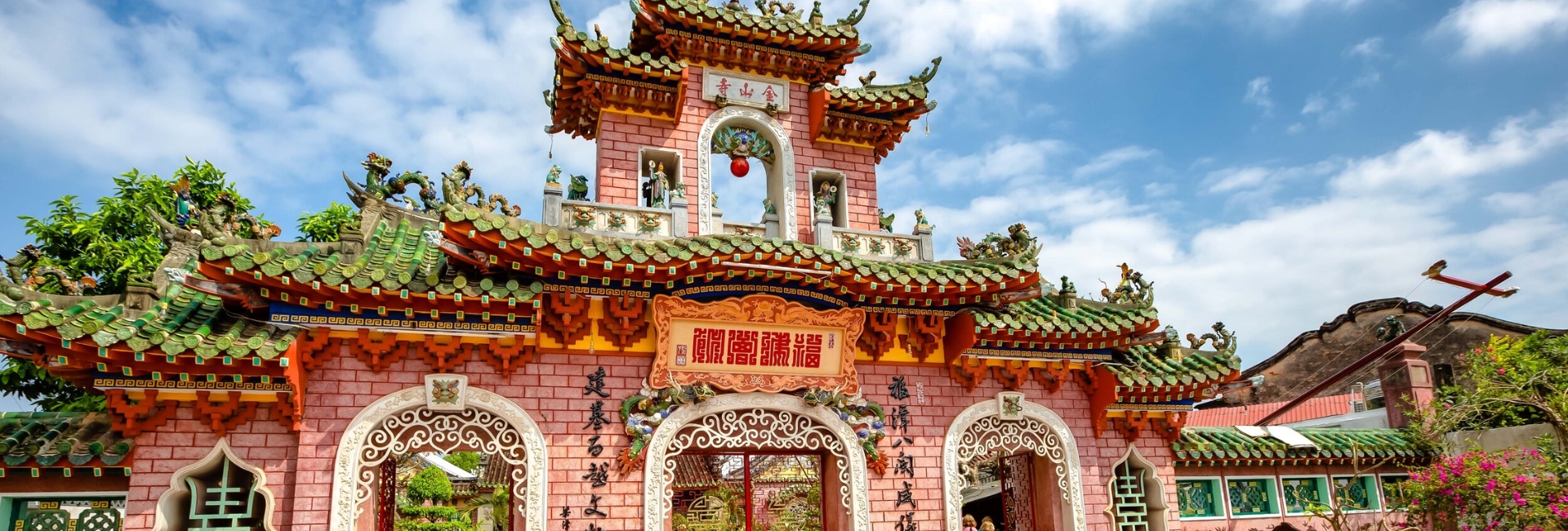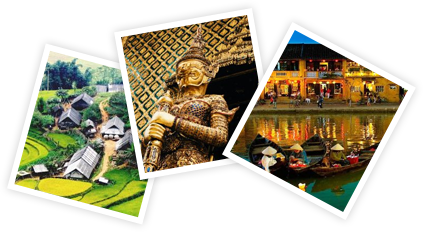Located at 46 Tran Phu Street in the heart of Hoi An Ancient Town, Phuc Kien Pagoda (also known as Fukien Assembly Hall) stands as a testament to the city’s rich cultural heritage. This attraction draws travelers with its stunning architecture, historical significance, and spiritual atmosphere, offering a glimpse into the lives of the Chinese merchants who once called Hoi An home.
The History
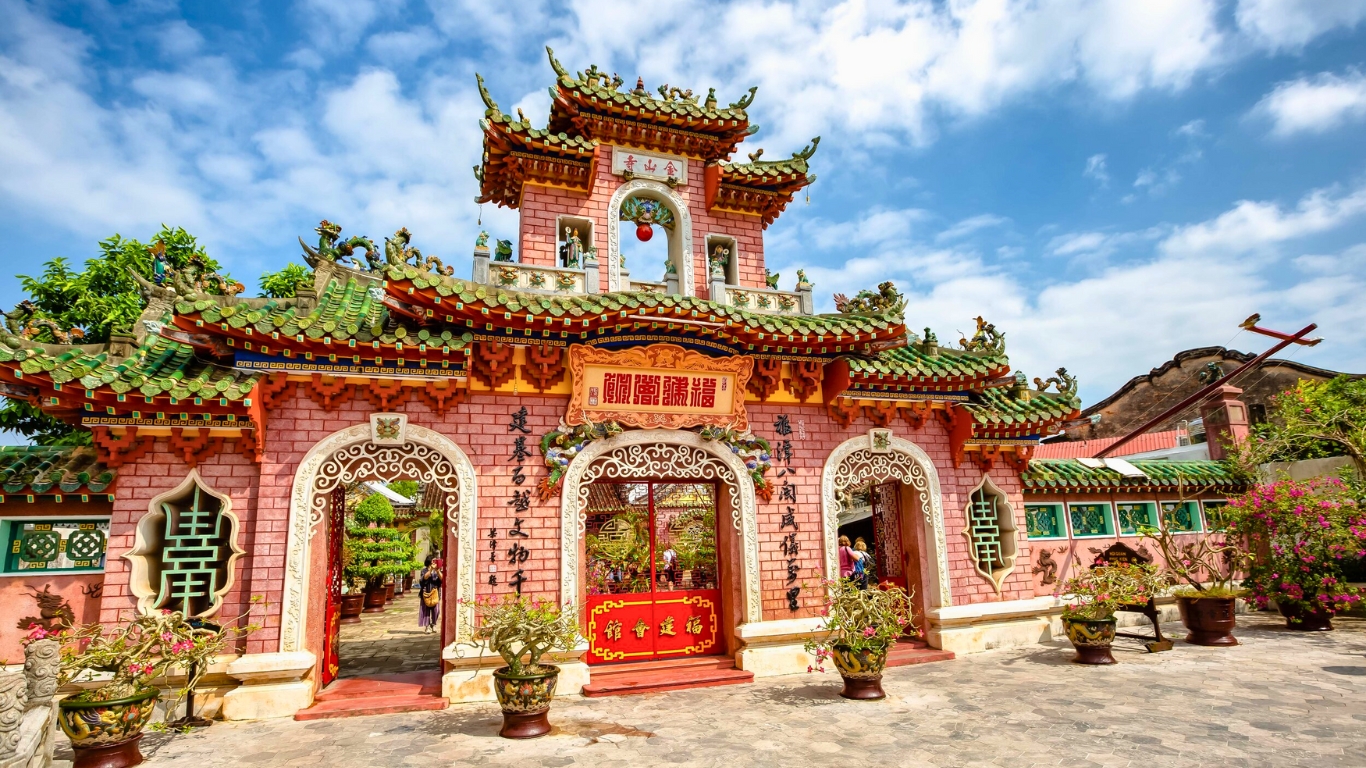
Phuc Kien Pagoda‘s origins date back to the 16th century. Legend has it that the assembly hall began as a small shrine housing a statue of Thien Hau (the Goddess of the Sea), which was recovered from the waters near Hoi An’s coast in 1697. This goddess was revered by merchants for her protection during sea voyages.
The site evolved to become a meeting place for the Fujian community, who were among the earliest Chinese settlers in Hoi An. Over time, with support and contributions from the Chinese diaspora, the assembly hall underwent several renovations, growing more magnificent and contributing to the architectural beauty of Hoi An’s ancient urban landscape.
Phuoc Kien’s first formal structure was built in 1690, initially serving as a social gathering place for the Fujian-born community in Hoi An. It later transformed into a temple dedicated to Thien Hau, reflecting the maritime heritage of the merchant families that settled in the area.
Visitors to the assembly hall can admire a structure that showcases the skillful craftsmanship and aesthetic vision of the ancients, blending Chinese architectural elements with local influences.
What to do in Phuc Kien Pagoda?
Witness the unique design of the Assembly Hall
Phuc Kien Pagoda is not only steeped in history but also stands as an exemplary cultural architectural work in Hoi An. Its grand and majestic design, adorned with eye-catching red hues and intricate patterns, makes the assembly hall a standout feature that enriches the ancient town’s architecture.
Among the assembly halls in Hoi An, Phuc Kien boasts the most spacious and beautiful interior. Originally constructed from wood, it was later renovated using brick and tile roofing. Visitors come to admire the exquisite and skillful carved architectural details throughout the complex.
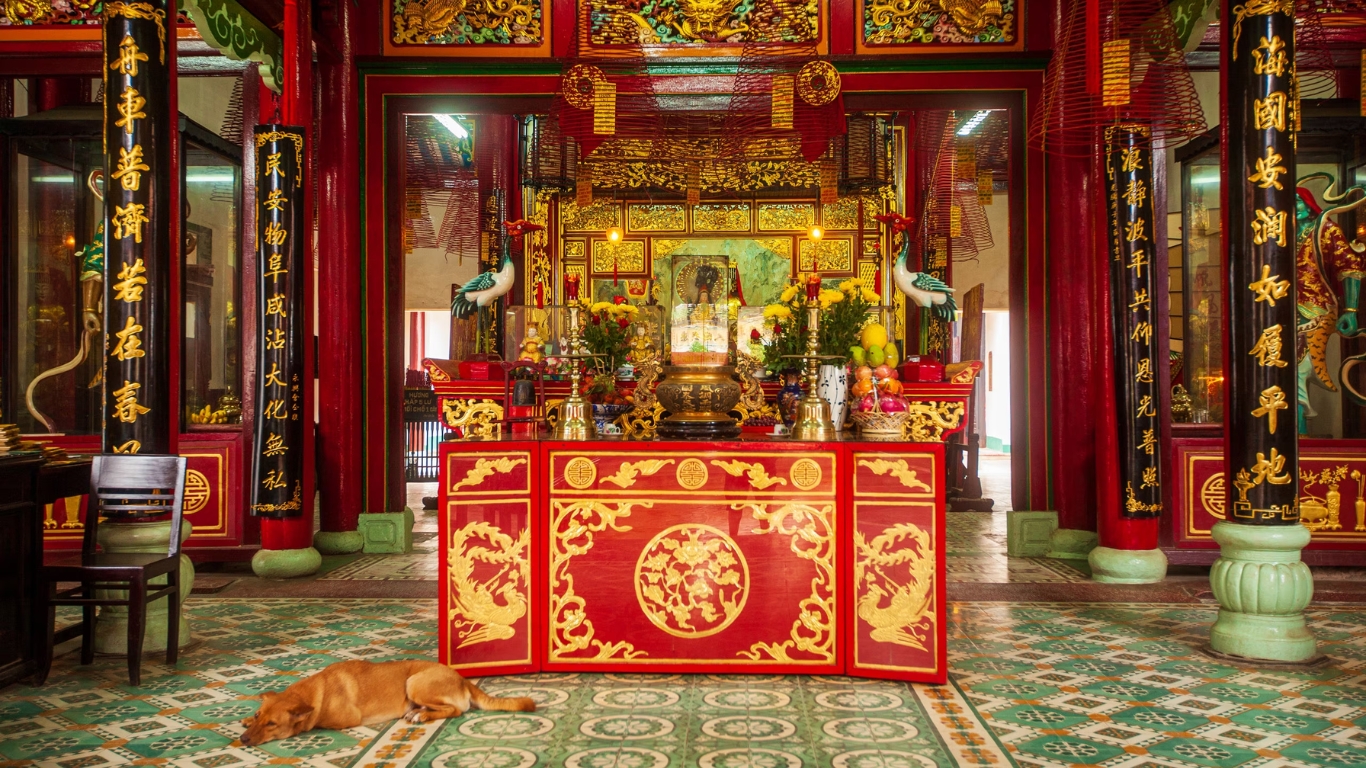
The Triple Gate (Tam Quan): Adorned with ceramic tiles and featuring upward-curving yin-yang roof tiles, this gate has three entrances symbolizing “Heaven, Earth, and Humanity.” Traditionally, the central door was rarely opened except for major ceremonies to prevent negative energy from entering.
The Main Hall: Inside, you’ll find altars dedicated to Thien Hau, the Goddess of Mercy (Quan The Am Bo Tat), the God of Wealth, the 12 Midwives, and the Three Birth Goddesses. All are displayed solemnly alongside other valuable artifacts.
The Back Sanctuary: This area is where locals and visitors light large incense coils to pray for health and prosperity. These coils can burn for over 30 days, and if extinguished, they are relit by the assembly hall’s caretakers.
Throughout the assembly hall, you’ll also find an array of statues, bronze bells, drums, incense burners, and intricately carved horizontal boards, each with its own historical and cultural significance.
Experience Religious activities at the temple
Visitors can observe or participate in various religious activities at Phuc Kien Pagoda. These may include offerings to the deities, lighting incense, and praying for good fortune and protection. The temple is particularly lively during Chinese festivals and lunar calendar celebrations.
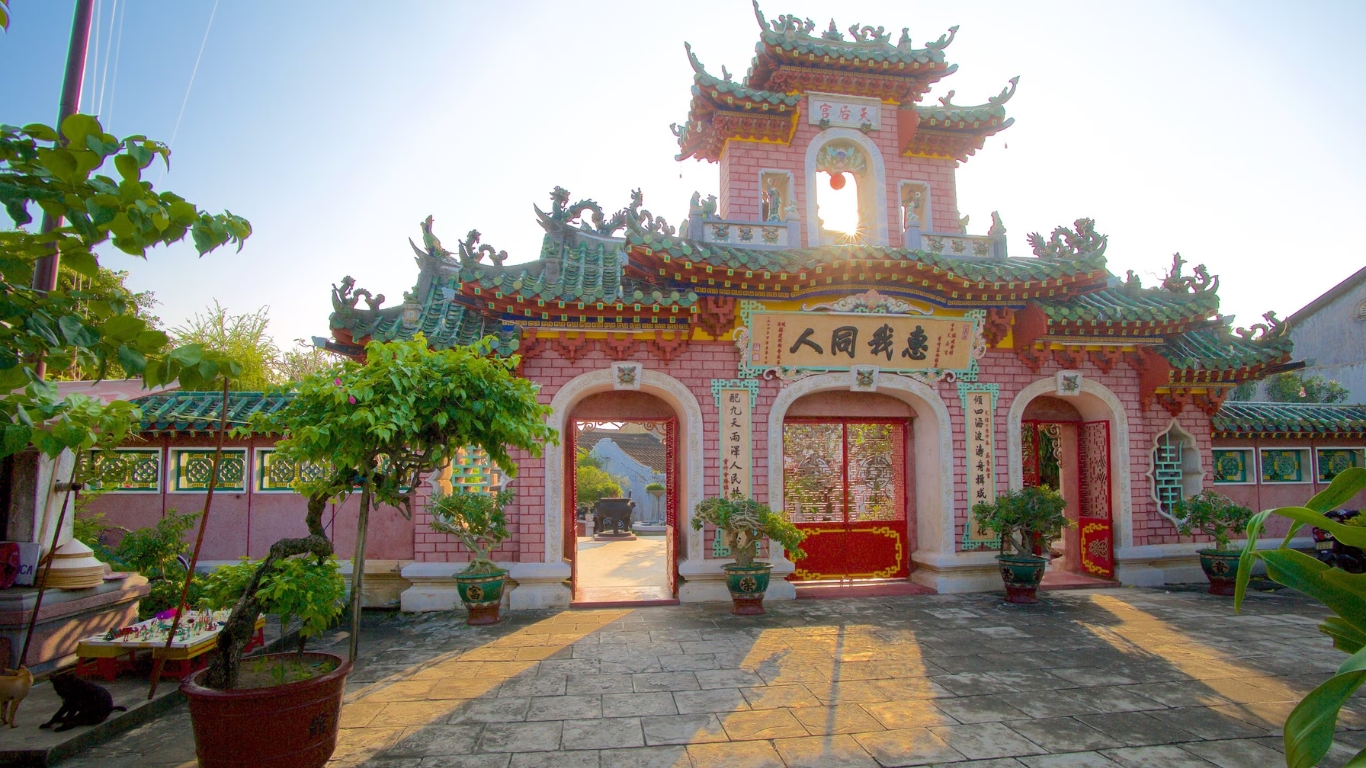
Before you go
Helpful travel information
- Location: 46 Tran Phu Street, Hoi An Ancient Town, Quang Nam Province, Vietnam
- Open time: Daily from 8:00 AM to 5:00 PM
- Entrance Price: Included in the Hoi An Ancient Town ticket (120,000 VND for foreigners, valid for 24 hours)
- The best time to visit: Early morning or late afternoon to avoid the midday heat and crowds. The pagoda is particularly atmospheric during the full moon festivals and during Chinese Festivals and Lunar New Year (often in January or February every year).
Notes before visiting
- Dress modestly out of respect for the religious site.
- Remove your shoes before entering the main hall.
- Ask for permission before taking photos of people or altars.
- Speak softly and be mindful of ongoing worship activities.
- Consider hiring a local guide for deeper insights into the pagoda’s history and symbolism.
- Combine your visit with other nearby attractions in the Ancient Town for a full day of exploration.
- Be prepared for potential crowds during peak tourist seasons and festivals.
By following these guidelines and immersing yourself in the rich history and culture of Phuc Kien Pagoda, you’re sure to have a memorable and respectful visit to this important Hoi An landmark.
Thuy Dang – From Indochina Voyages Teams

